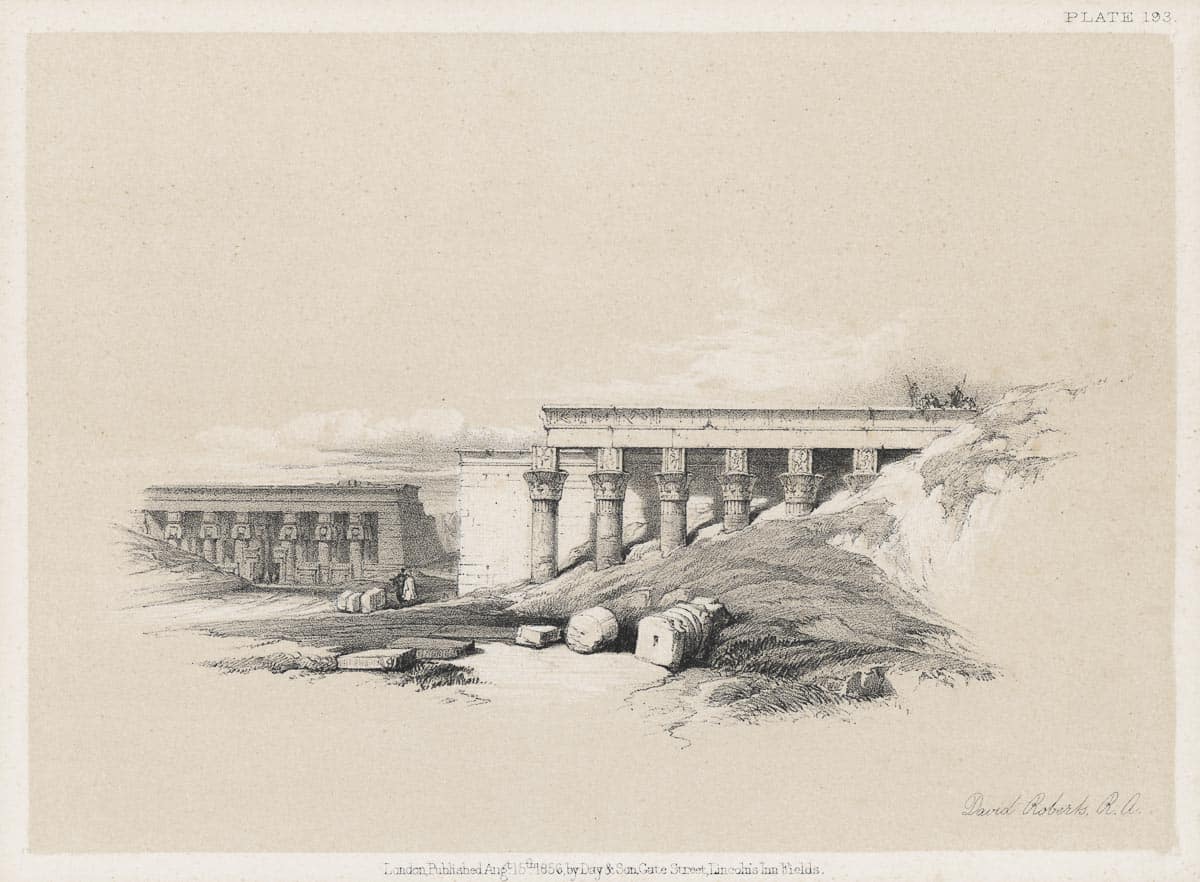
13.5 x 18.5 cm lithograph
David Roberts (1796–1864) was a Scottish painter. He became one of the most esteemed landscape artists of the 19th century, particularly renowned for his exquisite drawings and lithographs of Egypt and the Near East. His journey to Egypt in 1838 marked a pivotal moment in his career and in the Western perception of Oriental landscapes. Roberts’ expedition was part of a larger European fascination with Egyptology and the Orient, spurred by Napoleon’s campaigns and the deciphering of the Rosetta Stone.
Roberts traveled extensively throughout the region from 1838 to 1840. His artworks stand out for their attention to architectural detail, light, and atmosphere, capturing the grandeur and decay of ancient Egyptian civilisation. Roberts meticulously documented notable landmarks such as the Great Pyramids of Giza, the temples of Abu Simbel, and the ruins of Karnak, as well as everyday scenes of Egyptian life, providing a window into the 19th-century Middle East.
What set Roberts apart was not just the quality of his work but his method. He sketched on-site, braving the harsh conditions of the desert and the bureaucratic complexities of the Ottoman Empire. These sketches served as the basis for his more detailed watercolours and lithographs, which he produced upon his return to Britain. His work was published in a series titled The Holy Land, Syria, Idumea, Arabia, Egypt, and Nubia from 1842 to 1849. This publication, consisting of lithographs made from his drawings, was met with critical acclaim and commercial success, influencing both art and popular views of the East. His work was likely an important source of inspiration for Francis Frith and his photographs of Ancient Egypt and the Near East.
Further read
- David Roberts. Via: en.wikipedia.org
